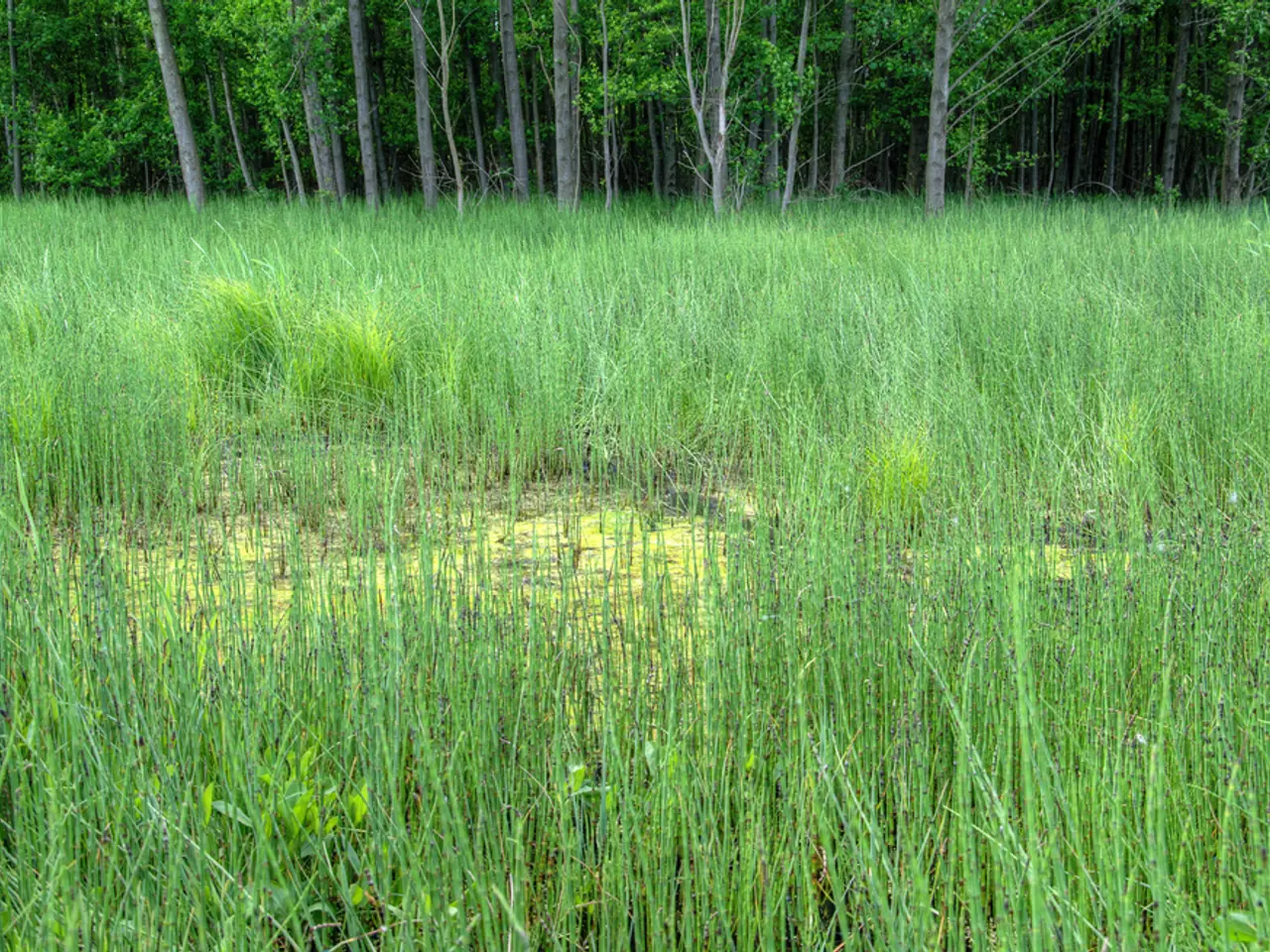Trump Poses Migrant Farm Workers' Race as Praise Under a Veil of Disguise
In the heart of American agriculture, a significant presence of unauthorized labour persists, with around 40% of hired crop farmworkers operating without legal status, according to data from 2020 to 2022 [1][2]. This figure excludes temporary agricultural workers and livestock or dairy workers, but it underscores a substantial reliance on undocumented labour within the sector.
In states like California, undocumented migrants constitute over 75% of agricultural labour, filling roles from supervisors to machine operators [2]. Farmers face major challenges in hiring local or legally authorized workers, with the H-2A guest worker visa program offering a complex and costly solution [2]. This bureaucracy often makes undocumented workers a cheaper and easier option despite increased enforcement and deportations.
Recent policy shifts, notably under the Trump administration, have led to the termination of work permits for hundreds of thousands of immigrants, pushing many into undocumented status. This has exacerbated labor shortages in agriculture and food processing, raising concerns about production capacity and food prices. Over 500,000 immigrants lost work authorization, with estimates that tens of thousands were farmworkers, contributing directly to a tightening labor market [4][5].
Deportation drives have intensified enforcement, with Immigration and Customs Enforcement (ICE) raids targeting agricultural workplaces. These actions have heightened labor shortages, putting farmers under pressure as they struggle to find workers for essential tasks like crop harvesting and dairy operations. Some farmers warn that mass deportations could lead to significant disruptions in food production and supply [2][5].
In response, there is increasing demand for foreign farmworkers under the H-2A visa program as a possible solution to fill gaps left by deportations. However, this program still covers only about 17% of agricultural workers nationally and is more accessible to large agribusinesses due to its cost and regulatory complexity [3][2].
Amidst these challenges, President Donald Trump made a controversial claim about migrant laborers during his Tuesday morning appearance on CNBC's "Squawk Box." Trump stated that "we're taking care of our farmers" and cannot let them not have anyone to work. He added that "these people, you can't replace them very easily." Trump claimed that migrants are uniquely suited to physically strenuous farm work, asserting that it comes "naturally" to them [6].
However, farmers report difficulty in finding enough local workers to help them at harvest time. The U.S. has seen a surge in migrants from South and Central America in recent decades, but numbers of migrants in the U.S. have plummeted since Trump retook office with the promise of mass deportations [7]. Trump's severe crackdown on immigration includes arrests of people who are following judges' orders, contributing to the ongoing labor shortages in agriculture [8].
Trump's comments echo the bigotry of centuries past, as much of the migrant workforce in U.S. agriculture is Latino or non-white. Trump referred to migrant workers as "very, very special people," while also acknowledging that his severe crackdown on immigration has impacted U.S. agriculture, which relies heavily on migrant labor [6].
In summary, the current status of undocumented farm laborers remains critical to U.S. agriculture, with about 40% employed without legal status. Farmers face the dual challenge of labor shortages caused by enforcement and the difficulty and expense of legally hiring through guest worker programs. These conditions are leading to economic and operational strains within the sector [1][2][3][4][5].
Sources:
[1] https://www.usda.gov/oce/rma/h2a/h2a-program-data [2] https://www.npr.org/2019/08/27/754056567/trump-administration-immigration-policy-is-hurting-u-s-agriculture [3] https://www.nytimes.com/2020/05/28/us/politics/trump-immigration-h2a-visa-program.html [4] https://www.pewresearch.org/fact-tank/2019/10/01/what-happened-to-the-daca-dreamers-under-the-trump-administration/ [5] https://www.washingtonpost.com/graphics/2020/national/immigration/ice-raids-workplace-arrests/ [6] https://www.cnbc.com/2019/08/27/trump-says-migrants-are-naturally-suited-for-farm-work-on-squawk-box.html [7] https://www.pewresearch.org/hispanic/2020/09/23/unauthorized-migration-from-mexico-to-the-u-s-has-fallen-sharply-since-2000/ [8] https://www.nytimes.com/2019/07/14/us/politics/ice-arrests-immigrants-following-judges-orders.html
- The significant presence of unauthorized labor in American agriculture, particularly in states like California, extends beyond crop farmworkers, with undocumented migrants filling roles such as supervisors and machine operators in a culture heavily influenced by immigration.
- In the realm of general news and crime-and-justice, the Trump administration's harsh immigration policies, including the cancellation of work permits for hundreds of thousands of immigrants, have contributed to a tightening labor market in war-and-conflicts-unrelated sectors like agriculture, exacerbating existing labor shortages.
- The current political landscape, with its complexities in hiring local or legally authorized workers and the costly and bureaucratic H-2A guest worker visa program, has led to the continued reliance on undocumented labor in the culture of American agriculture, causing economic and operational strains.







